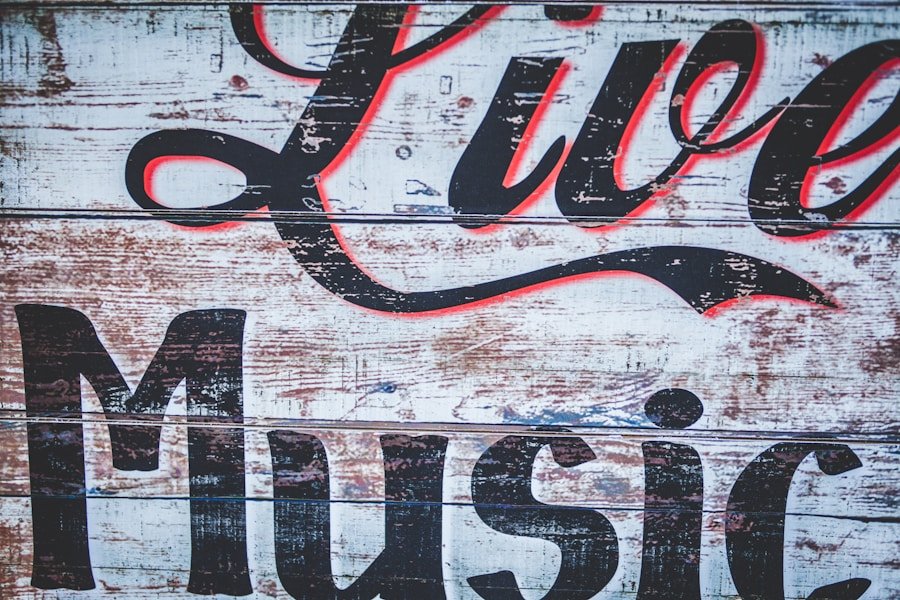The music industry has undergone a remarkable transformation over the decades, evolving from a primarily live performance-based economy to a complex digital landscape. In the early days, music was shared through live performances, with artists relying on their talent and charisma to draw in crowds. Record labels began to emerge in the 20th century, creating a system where recorded music could be mass-produced and distributed.
This shift not only changed how music was consumed but also how artists were discovered and promoted. You can see this evolution as a reflection of societal changes, where technology and culture intertwine to shape the way we experience art. As you delve deeper into the history of music, you’ll notice that each era brought its own innovations.
The introduction of radio in the 1920s revolutionized music consumption, allowing people to listen to their favorite songs from the comfort of their homes. The advent of television further propelled artists into the limelight, creating icons who would dominate the charts for decades. The rise of cassette tapes and CDs in the late 20th century made music more accessible than ever, allowing fans to build personal collections.
Each of these milestones not only changed how music was produced and consumed but also influenced the very fabric of popular culture.
Key Takeaways
- The music industry has evolved significantly over the years, from physical sales to digital streaming.
- Technology has had a major impact on the music industry, changing the way music is created, distributed, and consumed.
- Streaming services have become a dominant force in the music industry, reshaping the way music is accessed and monetized.
- Social media plays a crucial role in music marketing, allowing artists to connect with fans and promote their music in new and innovative ways.
- Live events and concerts remain a powerful force in the music industry, providing artists with a platform to connect with fans and generate revenue.
The Impact of Technology on the Music Industry
Technology has been a driving force behind the evolution of the music industry, reshaping how artists create, distribute, and promote their work. The introduction of digital recording technology in the late 20th century allowed musicians to produce high-quality recordings at a fraction of the cost. This democratization of music production meant that aspiring artists could create professional-sounding tracks without needing a major label’s backing.
You can appreciate how this shift has led to an explosion of creativity, with diverse voices emerging from all corners of the globe. Moreover, the internet has revolutionized music distribution. Gone are the days when physical albums dominated sales; now, digital downloads and streaming have taken center stage.
Platforms like iTunes and Spotify have made it easier for listeners to access vast libraries of music instantly. This shift has not only changed consumer behavior but has also forced record labels to adapt their business models. As an artist or a fan, you can see how these changes have created new opportunities for exposure and revenue generation, while also presenting challenges in terms of fair compensation for creators.
The Role of Streaming Services in the Music Industry

Streaming services have become a cornerstone of the modern music industry, fundamentally altering how you consume music. Platforms like Spotify, Apple Music, and Tidal have made it possible for you to access millions of songs with just a few clicks. This convenience has transformed listening habits, with many people now favoring playlists and curated content over traditional albums.
You might find yourself discovering new artists through algorithm-driven recommendations or curated playlists that align with your musical tastes. However, while streaming services have democratized access to music, they have also sparked debates about artist compensation. Many musicians argue that the revenue generated from streams is insufficient compared to traditional album sales.
As a listener, you may feel torn between enjoying the convenience of streaming and recognizing the challenges faced by artists trying to make a living from their craft. This ongoing conversation highlights the need for a more equitable model that ensures creators are fairly compensated for their work while still providing you with access to the music you love.
The Influence of Social Media on Music Marketing
| Metrics | Data |
|---|---|
| Number of social media users worldwide | 3.78 billion |
| Percentage of internet users who discover new music through social media | 64% |
| Percentage of music marketers who use social media for promotion | 87% |
| Engagement rate on music-related posts on social media | 3.21% |
| Percentage of music sales attributed to social media marketing | 25% |
Social media has emerged as a powerful tool for music marketing, allowing artists to connect directly with their fans in ways that were previously unimaginable. Platforms like Instagram, TikTok, and Twitter enable musicians to share their journeys, promote new releases, and engage with their audience on a personal level. You can witness how artists use these platforms to build their brands and cultivate loyal fan bases by sharing behind-the-scenes content, live performances, and even snippets of new songs.
The viral nature of social media has also changed how music is discovered. A single post or video can catapult an unknown artist into the spotlight overnight. You may have seen this phenomenon firsthand with songs that gain traction on TikTok, leading to chart-topping success.
This shift has empowered independent artists who may not have access to traditional marketing channels, allowing them to reach audiences worldwide without relying solely on record labels. As you navigate social media, you become part of this dynamic ecosystem where your engagement can directly impact an artist’s career.
The Power of Live Events and Concerts
Despite the rise of digital consumption, live events and concerts remain a vital aspect of the music industry. For many artists, touring is not just a way to connect with fans; it’s also a significant source of income. You can feel the energy in a live performance as artists bring their music to life on stage, creating an experience that transcends what can be captured in a studio recording.
The communal aspect of concerts fosters a sense of belonging among fans, making it an essential part of the music experience. In recent years, live events have evolved to incorporate technology in exciting ways. From virtual concerts during the pandemic to immersive experiences that blend music with visual art, you can see how innovation continues to shape live performances.
These developments not only enhance your experience as an audience member but also provide artists with new avenues for creativity and expression. As you attend concerts or watch live streams, you become part of a shared moment that celebrates the power of music.
The Importance of Music Licensing and Publishing

Music licensing and publishing play crucial roles in ensuring that artists receive compensation for their work while allowing others to use their music legally. When you hear a song in a commercial or see it featured in a film or TV show, it’s likely that licensing agreements were put in place to protect both the artist’s rights and the interests of those using the music. Understanding this aspect of the industry is essential for anyone involved in music creation or consumption.
For artists, effective management of licensing and publishing rights can significantly impact their revenue streams. You may not realize it, but every time a song is played on the radio or streamed online, royalties are generated for the songwriter and publisher. This system ensures that creators are compensated fairly for their contributions while allowing businesses to utilize music in ways that enhance their products or services.
As you explore your favorite songs and artists, consider how these behind-the-scenes processes contribute to the vibrant tapestry of the music industry.
The Rise of Independent Artists and Labels
In recent years, there has been a notable rise in independent artists and labels challenging the traditional music industry model. With advancements in technology and distribution channels, you can see how more musicians are choosing to forge their own paths rather than signing with major labels. This shift has led to an explosion of diverse sounds and genres as independent artists explore creative freedom without corporate constraints.
As an audience member, you benefit from this trend as it allows you to discover unique voices that may not fit into mainstream categories. Independent artists often cultivate strong connections with their fans through grassroots marketing efforts and social media engagement. You might find yourself supporting these musicians through crowdfunding campaigns or attending intimate shows that foster a sense of community.
This movement not only enriches your listening experience but also empowers artists to take control of their careers.
The Future of the Music Industry: Trends and Predictions
Looking ahead, the future of the music industry is poised for continued evolution driven by technological advancements and changing consumer behaviors. You can expect further integration of artificial intelligence in music creation and curation, leading to innovative sounds and personalized listening experiences tailored just for you. As AI tools become more sophisticated, they may assist artists in composing music or even generating unique tracks based on listener preferences.
Additionally, as virtual reality and augmented reality technologies advance, live performances may transform into immersive experiences that blur the lines between reality and digital artistry. Imagine attending a concert where holographic visuals enhance your experience or participating in virtual meet-and-greets with your favorite artists from anywhere in the world. These trends suggest an exciting future where technology continues to reshape how you engage with music.
In conclusion, as you navigate this ever-changing landscape, remember that your role as a listener is vital in shaping the future of the music industry. Your support for artists—whether through streaming their songs, attending concerts, or engaging with them on social media—contributes to a vibrant ecosystem that celebrates creativity and innovation. Embrace these changes as they unfold; after all, they reflect not just advancements in technology but also our collective love for music as an art form that connects us all.
